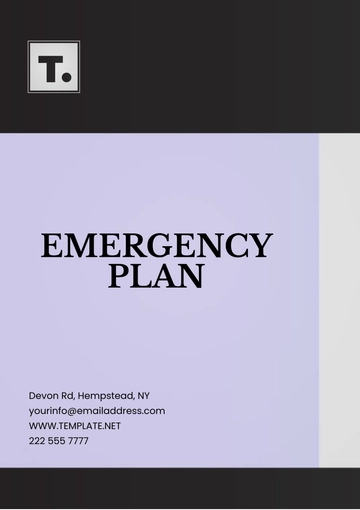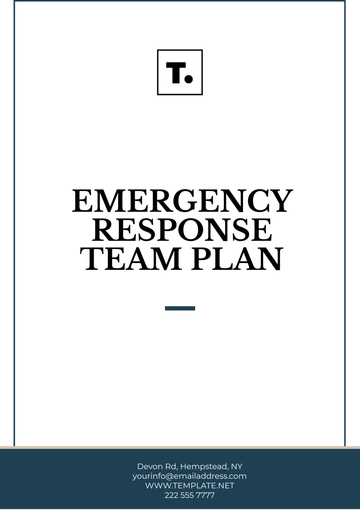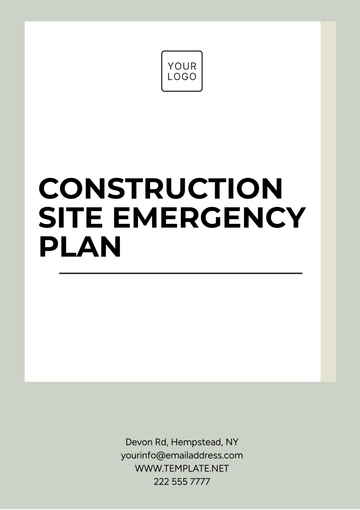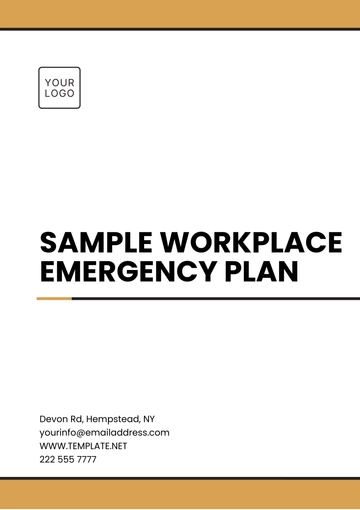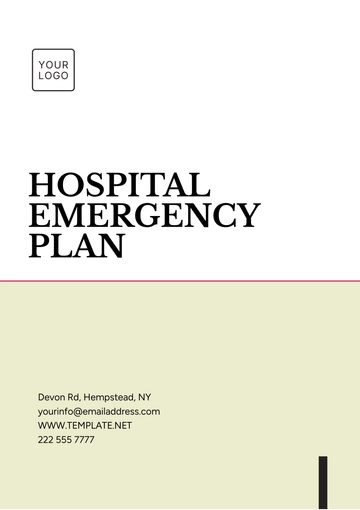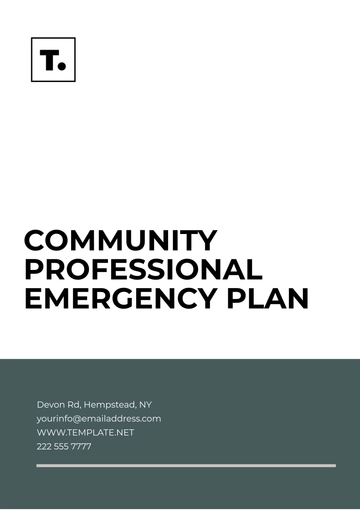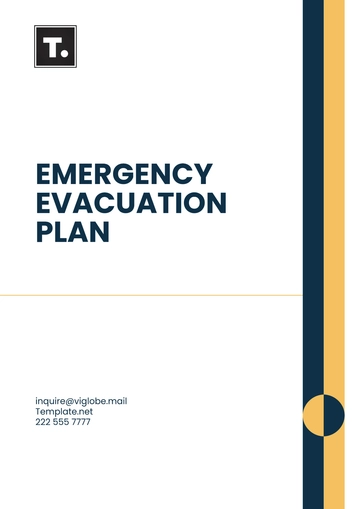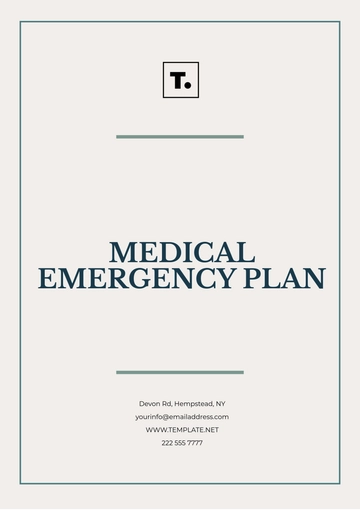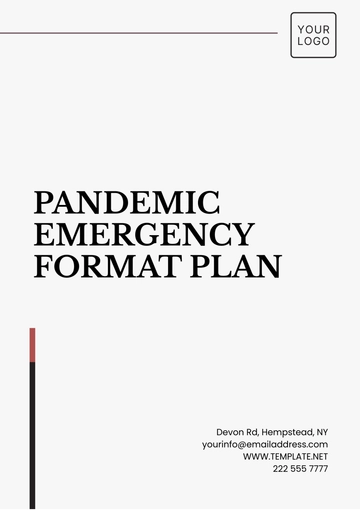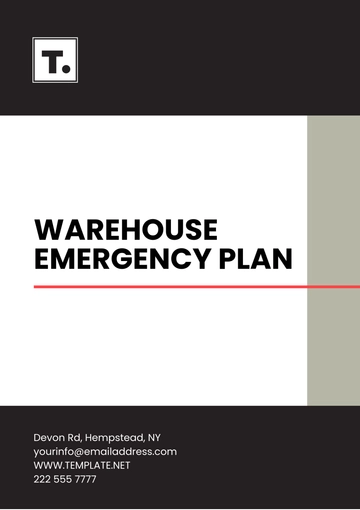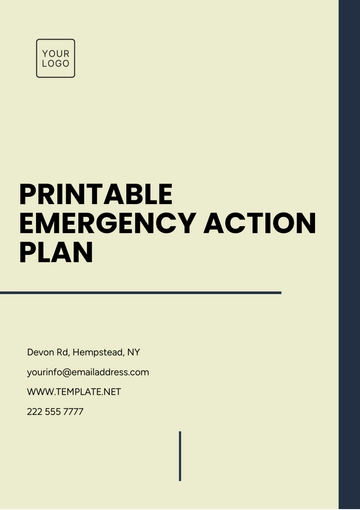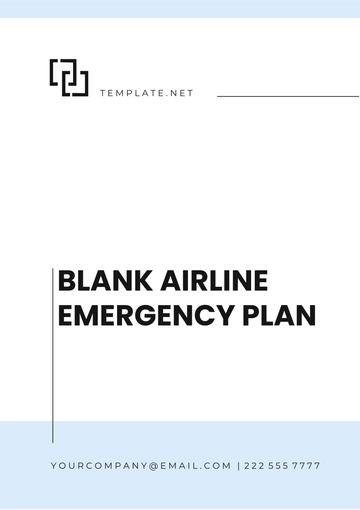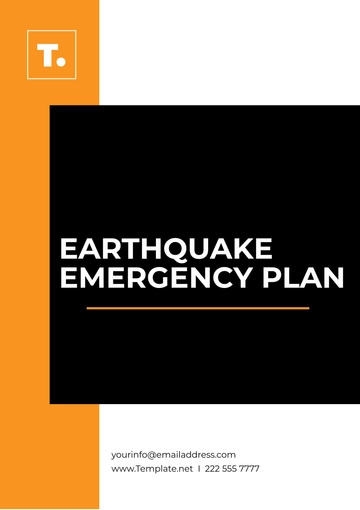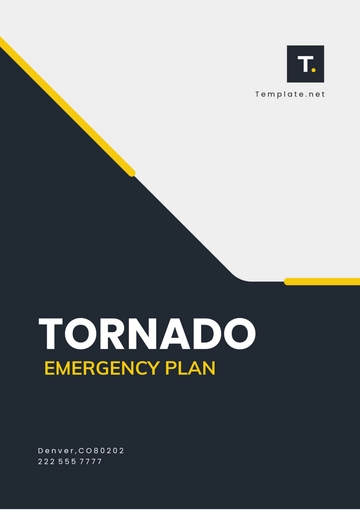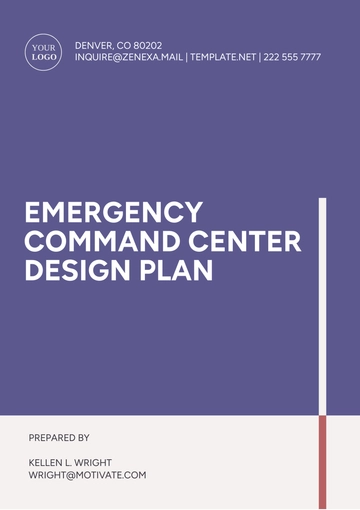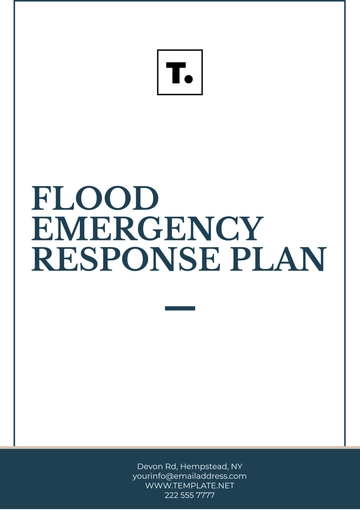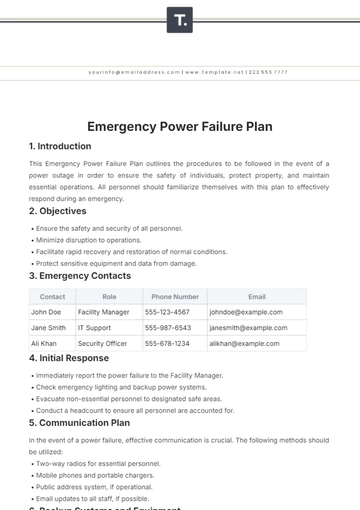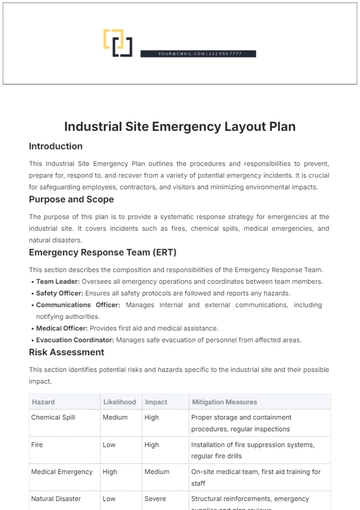Free Emergency Safety Plan

I. Introduction
The Emergency Safety Plan is designed to prepare and protect individuals in the event of an emergency. This plan provides guidelines and procedures to follow during various types of emergencies to ensure the safety and well-being of everyone involved.
II. Emergency Contacts
1. Emergency Services
Phone: 911 (or the appropriate emergency services number for your location)
2. Family Emergency Contact
Name: [Family Emergency Contact Name]
Relationship: [Relation to Family]
Phone Number: [Family Emergency Contact Phone Number]
3. Workplace Emergency Contact
Name: [Workplace Emergency Contact Name]
Position: [Job Title]
Phone Number: [Workplace Emergency Contact Phone Number]
4. Neighbor/Friend Contact
Name: [Neighbor/Friend Name]
Relationship: [Relation to Family]
Phone Number: [Neighbor/Friend Phone Number]
III. Risk Assessment and Preparation
1. Identify Potential Emergencies
Natural disasters (e.g., earthquakes, floods, hurricanes)
Fires
Medical emergencies
Power outages
Hazardous material spills
2. Create an Emergency Kit
Non-perishable food and water (sufficient for at least 72 hours)
First aid kit and medications
Flashlights and extra batteries
Battery-powered or hand-crank radio
Personal hygiene items
Important documents (copies of identification, insurance policies, etc.)
Clothing and blankets
Tools and supplies (multi-tool, duct tape, etc.)
Pet supplies (if applicable)
3. Establish Emergency Meeting Points
Designate safe locations to meet outside the home and in the community.
Ensure all family members know the meeting points and how to get there.
4. Develop an Evacuation Plan
Plan multiple evacuation routes from your home and community.
Identify safe places to stay in case of evacuation (e.g., relatives, shelters).
IV. Communication Plan
1. Emergency Communication
Establish a communication plan to stay in contact with family members during an emergency.
Use text messages or social media to communicate if phone lines are overloaded.
2. Emergency Information
Keep important emergency contact information, medical records, and copies of identification documents in a readily accessible location.
Create emergency contact cards for each family member to carry with them at all times.
V. Emergency Procedures
1. Fire Safety
Install smoke detectors on each floor and test them regularly.
Practice fire drills with all family members, including using escape routes and meeting at a designated safe location.
2. Natural Disasters
Follow local authorities' instructions and evacuate if advised.
During earthquakes, practice "Drop, Cover, and Hold On."
In case of floods, move to higher ground and avoid walking or driving through floodwaters.
3. Medical Emergencies
Know basic first aid and CPR.
Call 911 for medical emergencies and follow the operator's instructions until help arrives.
4. Power Outages
Keep flashlights and batteries readily available.
Use generators safely and never indoors.
Unplug electrical appliances to prevent damage from power surges when power is restored.
VI. Training and Drills
1. Regular Training
Provide training to all family members on emergency procedures, first aid, and CPR.
Ensure everyone knows how to use emergency equipment and where it is stored.
2. Emergency Drills
Conduct regular emergency drills for different scenarios (e.g., fire, earthquake, evacuation).
Review and practice the emergency plan periodically to ensure everyone remains familiar with it.
VII. Post-Emergency Actions
1. Check for Injuries
Check yourself and others for injuries and administer first aid as needed.
Seek medical attention for serious injuries.
2. Assess Safety
Check for hazards such as structural damage, gas leaks, or downed power lines before re-entering buildings.
Follow local authorities' guidance on returning home and safety precautions.
3. Communicate and Reunite
Use the established communication plan to contact family members and confirm everyone's safety.
Meet at the designated emergency meeting point if separated.
4. Document and Report
Document any damage or injuries for insurance and emergency reporting purposes.
Report hazards or damage to local authorities.
VIII. Review and Update
1. Regular Review
Review and update the Emergency Safety Plan regularly to incorporate new information, changes in family circumstances, and lessons learned from drills or actual emergencies.
2. Feedback
Solicit feedback from family members and other stakeholders to improve the plan.
Incorporate suggestions and update procedures as necessary.
IX. Conclusion
The Emergency Safety Plan aims to ensure the safety and well-being of all individuals during emergencies. By following these guidelines and procedures, we can be better prepared to respond effectively to various emergencies.
- 100% Customizable, free editor
- Access 1 Million+ Templates, photo’s & graphics
- Download or share as a template
- Click and replace photos, graphics, text, backgrounds
- Resize, crop, AI write & more
- Access advanced editor
Ensure safety with our Emergency Safety Plan Template from Template.net. This fully customizable and editable template allows you to tailor every detail to your needs. Easily editable in our Ai Editor tool, it simplifies the creation of comprehensive emergency plans to protect your team and assets.
You may also like
- Finance Plan
- Construction Plan
- Sales Plan
- Development Plan
- Career Plan
- Budget Plan
- HR Plan
- Education Plan
- Transition Plan
- Work Plan
- Training Plan
- Communication Plan
- Operation Plan
- Health And Safety Plan
- Strategy Plan
- Professional Development Plan
- Advertising Plan
- Risk Management Plan
- Restaurant Plan
- School Plan
- Nursing Home Patient Care Plan
- Nursing Care Plan
- Plan Event
- Startup Plan
- Social Media Plan
- Staffing Plan
- Annual Plan
- Content Plan
- Payment Plan
- Implementation Plan
- Hotel Plan
- Workout Plan
- Accounting Plan
- Campaign Plan
- Essay Plan
- 30 60 90 Day Plan
- Research Plan
- Recruitment Plan
- 90 Day Plan
- Quarterly Plan
- Emergency Plan
- 5 Year Plan
- Gym Plan
- Personal Plan
- IT and Software Plan
- Treatment Plan
- Real Estate Plan
- Law Firm Plan
- Healthcare Plan
- Improvement Plan
- Media Plan
- 5 Year Business Plan
- Learning Plan
- Marketing Campaign Plan
- Travel Agency Plan
- Cleaning Services Plan
- Interior Design Plan
- Performance Plan
- PR Plan
- Birth Plan
- Life Plan
- SEO Plan
- Disaster Recovery Plan
- Continuity Plan
- Launch Plan
- Legal Plan
- Behavior Plan
- Performance Improvement Plan
- Salon Plan
- Security Plan
- Security Management Plan
- Employee Development Plan
- Quality Plan
- Service Improvement Plan
- Growth Plan
- Incident Response Plan
- Basketball Plan
- Emergency Action Plan
- Product Launch Plan
- Spa Plan
- Employee Training Plan
- Data Analysis Plan
- Employee Action Plan
- Territory Plan
- Audit Plan
- Classroom Plan
- Activity Plan
- Parenting Plan
- Care Plan
- Project Execution Plan
- Exercise Plan
- Internship Plan
- Software Development Plan
- Continuous Improvement Plan
- Leave Plan
- 90 Day Sales Plan
- Advertising Agency Plan
- Employee Transition Plan
- Smart Action Plan
- Workplace Safety Plan
- Behavior Change Plan
- Contingency Plan
- Continuity of Operations Plan
- Health Plan
- Quality Control Plan
- Self Plan
- Sports Development Plan
- Change Management Plan
- Ecommerce Plan
- Personal Financial Plan
- Process Improvement Plan
- 30-60-90 Day Sales Plan
- Crisis Management Plan
- Engagement Plan
- Execution Plan
- Pandemic Plan
- Quality Assurance Plan
- Service Continuity Plan
- Agile Project Plan
- Fundraising Plan
- Job Transition Plan
- Asset Maintenance Plan
- Maintenance Plan
- Software Test Plan
- Staff Training and Development Plan
- 3 Year Plan
- Brand Activation Plan
- Release Plan
- Resource Plan
- Risk Mitigation Plan
- Teacher Plan
- 30 60 90 Day Plan for New Manager
- Food Safety Plan
- Food Truck Plan
- Hiring Plan
- Quality Management Plan
- Wellness Plan
- Behavior Intervention Plan
- Bonus Plan
- Investment Plan
- Maternity Leave Plan
- Pandemic Response Plan
- Succession Planning
- Coaching Plan
- Configuration Management Plan
- Remote Work Plan
- Self Care Plan
- Teaching Plan
- 100-Day Plan
- HACCP Plan
- Student Plan
- Sustainability Plan
- 30 60 90 Day Plan for Interview
- Access Plan
- Site Specific Safety Plan
